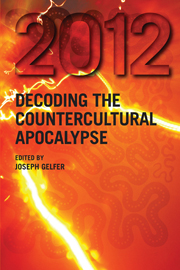Book contents
- Frontmatter
- Contents
- Contributors
- Preface
- 1 Introduction
- 2 The 2012 Phenomenon: New Uses for an Ancient Maya Calendar
- 3 Maya Prophecies, 2012 and the Problematic Nature of Truth
- 4 Mayanism Comes of (New) Age
- 5 The 2012 Milieu? Hybridity, Diversity and Stigmatised Knowledge
- 6 Chichén Itzá and Chicken Little: How Pseudosciences Embraced 2012
- 7 Roland Emmerich's 2012: A Simple Truth
- 8 The 2012 Movement, Visionary Arts and Psytrance Culture
- 9 In a Prophetic Voice: Australasia 2012
- 10 Approaching 2012: Modern Misconceptions versus Reconstructing Ancient Maya Perspectives
- Notes
- Index
6 - Chichén Itzá and Chicken Little: How Pseudosciences Embraced 2012
- Frontmatter
- Contents
- Contributors
- Preface
- 1 Introduction
- 2 The 2012 Phenomenon: New Uses for an Ancient Maya Calendar
- 3 Maya Prophecies, 2012 and the Problematic Nature of Truth
- 4 Mayanism Comes of (New) Age
- 5 The 2012 Milieu? Hybridity, Diversity and Stigmatised Knowledge
- 6 Chichén Itzá and Chicken Little: How Pseudosciences Embraced 2012
- 7 Roland Emmerich's 2012: A Simple Truth
- 8 The 2012 Movement, Visionary Arts and Psytrance Culture
- 9 In a Prophetic Voice: Australasia 2012
- 10 Approaching 2012: Modern Misconceptions versus Reconstructing Ancient Maya Perspectives
- Notes
- Index
Summary
Based on years of careful, painstaking astronomical observations, the Maya and myriad other contemporary cultures independently discovered patterns in the motions of the major celestial bodies, including the sun, moon, and planets. These observed patterns were utilised in the construction of intricate calendar systems, which varied significantly from one culture to the next. For example, one need only compare the Tibetan Buddhist and Jewish luni-solar calendars to appreciate the creativity used by humans in timekeeping. In this way pre-modern cultures enjoyed a clear and intimate link to the heavens above. In modern times, much of our astronomical legacy has been lost, due in part to the insidious light pollution which robs us of our view of the stars, as well as the modern convenience of standardised and automated timekeeping. Modern science has also successfully debunked the mystery and superstition surrounding such natural events as eclipses, meteor showers, and aurora (once sources of terror), only to be faced with a new set of astronomical bogeymen enthusiastically awaiting their chance to fill the void, in the form of astronomical pseudosciences. In The Demon-Haunted World, scientist and popular writer Carl Sagan (1997: 13) characterises pseudoscience as claims which “purport to use the methods of science, while in fact they are faithless to its nature—often because they are based on insufficient evidence or because they ignore clues that point the other way.” Popular astronomical pseudosciences include astrology, crop circles, and the so-called “Face on Mars”.
Information
- Type
- Chapter
- Information
- 2012Decoding the Countercultural Apocalypse, pp. 86 - 107Publisher: Acumen PublishingPrint publication year: 2012
